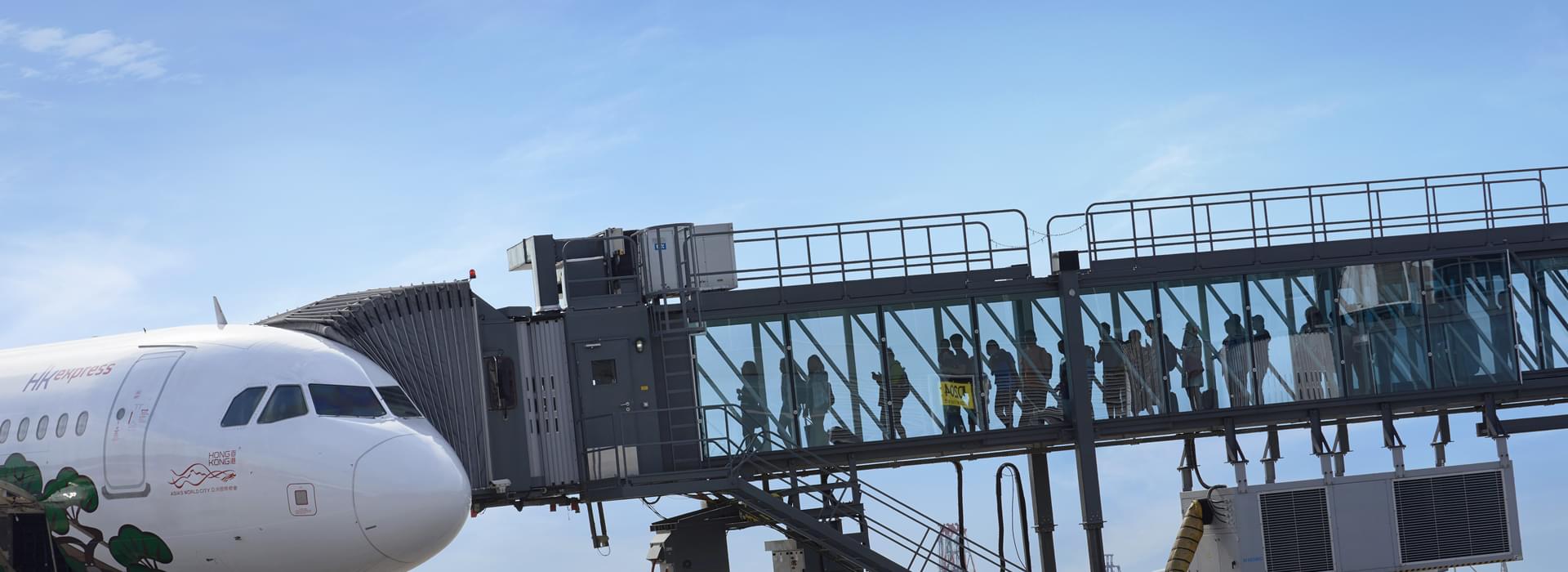| 102-1 |
Name of the organisation |
|
Airport Authority Hong Kong |
| 102-2 |
Activities, brands, products, and services |
|
|
| 102-3 |
Locations of headquarters |
|
Hong Kong |
| 102-4 |
Location of operations |
|
Hong Kong and the Mainland. AAHK is involved in the operation and management of three airports in the Mainland via joint ventures: Shanghai Hongqiao International Airport, Hangzhou Xiaoshan International Airport and Zhuhai Airport.
|
| 102-5 |
Ownership and legal form |
|
AAHK is a statutory body wholly owned by the HKSAR Government and governed by the Airport Authority Ordinance (Chapter 483, The Laws of Hong Kong).
|
| 102-6 |
Markets served |
|
As at March 2017, 108 airlines were operating at Hong Kong International Airport (HKIA), connecting Hong Kong to over 220 destinations worldwide.
|
| 102-7 |
Scale of the organisation |
|
|
| 102-8 |
Information on employees and other workers |
|
Learn more |
Number of employees by employment contract and gender as at 31 March 2017
| |
Male |
Female |
| Permanent contract |
973 |
643 |
| Fixed term contract |
230 |
83 |
Number of employees by employment contract and location as at 31 March 2017
| |
Hong Kong |
Outside Hong Kong |
| Permanent contract |
1,918 |
11 |
| Fixed term contract |
0 |
0 |
All AAHK’s employees (2016/17: 1,929) are full-time employees.
AAHK outsources many of the airport’s operational functions to franchisees, tenants and Government departments. AAHK conducts workforce survey amongst the companies and organisations operating at HKIA from time to time to update the manpower situation and projection to facilitate related planning of HKIA. The latest survey was conducted in 2017. According to the 2017 Survey, there were about 73,000 people working at HKIA.
|
| 102-9 |
Supply chain |
|
|
| 102-10 |
Significant changes to the organisation and its supply chain |
|
No significant changes in the structure and ownership of AAHK during the reporting period.
|
| 102-11 |
Precautionary Principle or approach |
|
|
| 102-12 |
External initiatives |
|
Learn more |
Airport- / Aviation-related (year of adoption by AAHK)
- Airport Authority Ordinance, Chapter 483, The Laws of Hong Kong* (1995)
- Aerodrome Licensing Requirements Document, Civil Aviation Department* (1998)
- ICAO International Standards and Recommended Practices* (1998)
Corporate Governance
- Companies Ordinance, Chapter 622, The Laws of Hong Kong (1998)
- Corporate Governance Code and Corporate Governance Report, Appendix 14 of the Listing Rules of Hong Kong Stock Exchange (2002/03)
Environment
- Clean Air Charter, Hong Kong General Chamber of Commerce & Hong Kong Business Coalition on the Environment (2007)
- Hong Kong Green Purchasing Charter, Green Council (2007)
- Programme on Source Separation of Commercial and Industrial Waste, Environmental Protection Department (EPD) (2007)
- Aviation Industry Commitment to Action on Climate Change, Enviro.aero (2008)
- Carbon Reduction Charter: Carbon Audit • Green Partner, EPD (2008)
- Manifesto for Energy Efficiency in Buildings, World Business Council for Sustainable Development (2012)
- Energy Saving Charter on ‘No ILB’, Electrical and Mechanical Services Department (2013)
- Food Wise Charter, EPD (2013)
- ‘Let’s Save 10L Water’ Campaign, Water Supplies Department (2013)
- The Greening Partner Charter, Development Bureau (2013)
- Wood Recycling & Tree Conservation Scheme, Hong Kong Environmental Protection Association (2013)
- Waste Check Charter, EPD (2015)
- Hong Kong Cooking Oil Registration Scheme, Hong Kong Quality Assurance Agency (HKQAA) (2015)
- Hong Kong Zero Carbon Partnership, The University of Hong Kong (2015)
- HKQAA Hong Kong Registration - Recycling Services, HKQAA (2015)
- Innovation Partner of CarbonCare Open Innovation Lab, CarbonCare InnoLab (2015)
Safety
- Occupational Safety Charter, Occupational Safety and Health Council (2001)
Social Responsibility
- Talent-Wise Employment Charter and Inclusive Organisations Recognition Scheme, Labour and Welfare Bureau (2013)
Others
- Agreement on Government Procurement of the World Trade Organization* (1998)
* AAHK has an obligation to comply with these principles and charters.
|
| 102-13 |
Membership of association |
|
Learn more |
Chair / Co-chair / Vice-chair
- Airports Council International (ACI) World Environment Standing Committee
- ACI Asia-Pacific Regional Board
- Aviation Fuel Facility Management Association of HKIA
Member
- ACI
- ACI Asia-Pacific
- Association for Project Management
- Aviation Security Committee, Security Bureau
- Business Environment Council
- Energy Liaison Group, HKSAR Government
- Hong Kong Association for Customer Service Excellence
- Hong Kong Logistics Development Council
- Hong Kong Trade Development Council – Logistics Services Advisory Committee
- Occupational Safety and Health Council – Logistics and Freight Transport Industry Safety and Health Committee
- Occupational Safety and Health Working Group of the Commerce, Industry and Housing Committee of Tuen Mun District Council
- The Hong Kong Green Building Council
- The Lighthouse Club Hong Kong
Trustee
- The International Air Cargo Association
|
